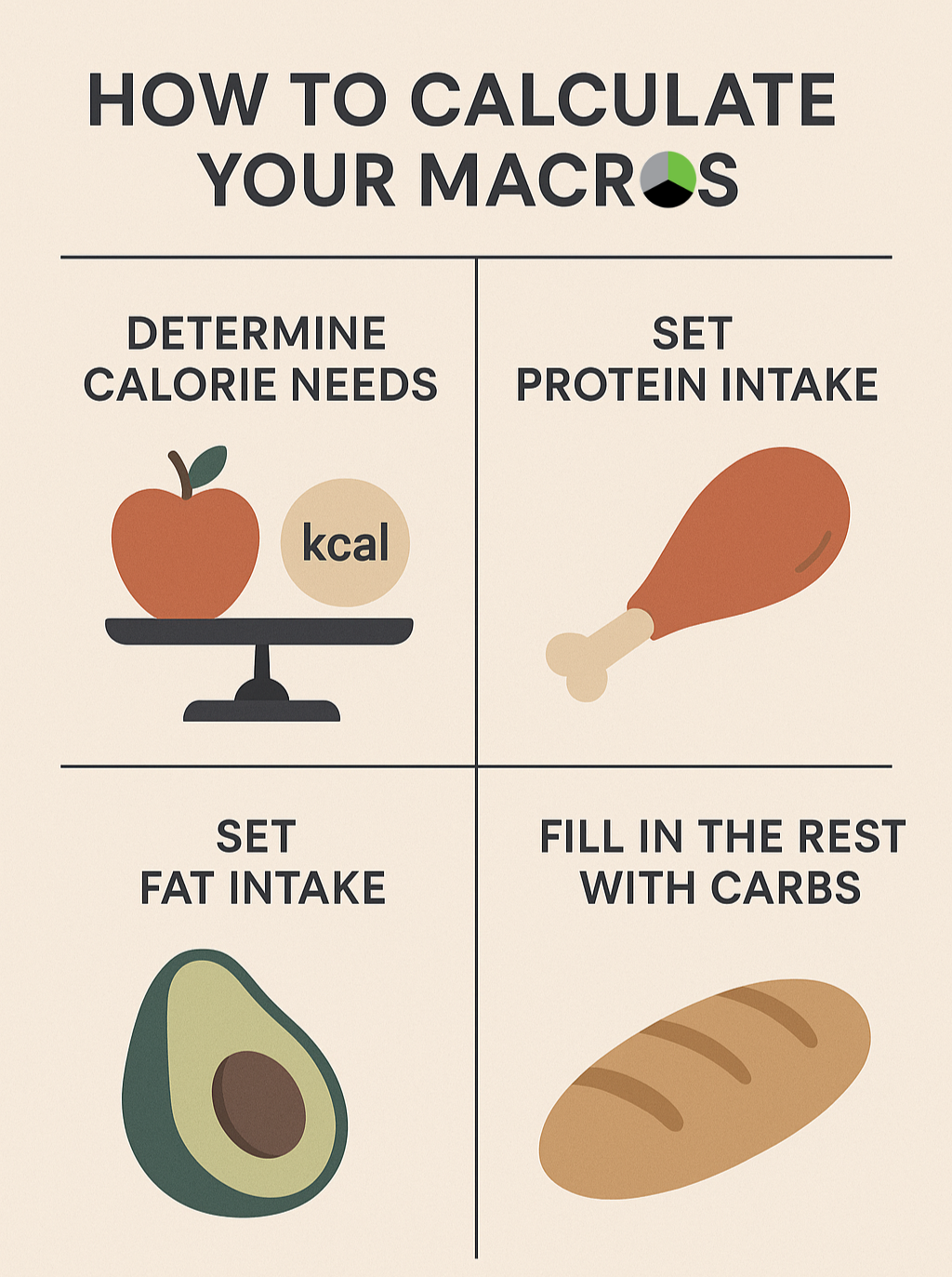If you’ve ever tried to reach a fitness goal—whether it’s weight loss, muscle gain, or simply feeling better—you’ve probably come across the term macros.
Macros (short for macronutrients) are the building blocks of your diet: protein, fat, and carbohydrates. Unlike calorie counting alone, tracking your macros gives you a deeper look at where your energy is coming from and how it supports your body’s needs.
In this guide, we’ll break down exactly how to calculate your macros step by step, with examples and tips to help you tailor them to your goals. And if you’re looking for an easy way to hit those macros without spending hours in the kitchen, we’ll show you how Mother of Macros Meal Prep can help too.
🥗 What Are Macros?
-
Protein: Builds and repairs tissues like muscles, skin, and enzymes.
-
Fats: Supports hormones, brain function, and energy.
-
Carbohydrates: Your body’s preferred source of quick energy.
Each macro also carries calories:
-
Protein: 4 calories per gram
-
Carbohydrates: 4 calories per gram
-
Fat: 9 calories per gram
⚖️ Step 1: Determine Your Calorie Needs
Before you split your macros, you need to know how many calories your body burns in a day (your Total Daily Energy Expenditure or TDEE).
-
Find your BMR (Basal Metabolic Rate):
This is how many calories you burn at rest. Use an online calculator or a formula like the Mifflin‑St Jeor equation.Example for a 30‑year‑old woman, 5’6” (167 cm), 170 lbs (77 kg):
BMR ≈ 10 x weight(kg) + 6.25 x height(cm) – 5 x age(y) – 161= (10 x 77) + (6.25 x 167) – (5 x 30) – 161= 770 + 1043.75 – 150 – 161 = ~1503 calories/day -
Adjust for activity:
Multiply your BMR by an activity factor:-
Sedentary (little exercise): x 1.2
-
Light activity: x 1.375
-
Moderate: x 1.55
-
Very active: x 1.725
Using the example:
1503 x 1.55 = ~2330 calories/day -
-
Adjust for your goal:
-
Weight loss: subtract ~250–500 calories/day
-
Maintenance: keep as is
-
Muscle gain: add ~250–500 calories/day
-
🍗 Step 2: Set Your Protein Intake
Protein is typically set based on body weight and goal.
A common range: 0.8–1.2 grams of protein per pound of lean body mass.
For our example (170 lbs, moderate activity, weight loss):
-
Goal: 1 g per lb = 170 g of protein
-
Calories from protein:
170 g x 4 cal/g = 680 calories
🥑 Step 3: Set Your Fat Intake
Fat intake is important for hormones and satiety.
A common range: 0.3–0.5 g per pound of body weight.
For our example:
-
0.4 g per lb =
170 x 0.4 = 68 g of fat -
Calories from fat:
68 g x 9 cal/g = 612 calories
🍞 Step 4: Fill in the Rest With Carbs
Now that protein and fat are set, use your remaining calories for carbs.
-
Total calories (weight loss goal): ~1,900 calories/day
-
Subtract protein and fat:
1900 – 680 (protein) – 612 (fat) = 608 calories left for carbs -
Convert to grams:
608 ÷ 4 = 152 g of carbs
📊 Your Final Macro Targets
For our example:
-
Protein: 170 g
-
Fat: 68 g
-
Carbs: 152 g
-
Calories: ~1,900/day
✨ Tips for Tracking Macros
✅ Use apps like MyFitnessPal, Cronometer, or Carb Manager.
✅ Weigh your food with a kitchen scale for accuracy.
✅ Don’t panic if you’re a little over or under—consistency matters more than perfection.
✅ Adjust every few weeks as your weight, activity level, or goals change.
🍴 Make Hitting Your Macros Easy
Planning and cooking every meal to hit your exact macros can feel overwhelming. That’s where Mother of Macros Meal Prep comes in.
Their chef‑crafted meals are designed with macro balance in mind—packed with lean proteins, healthy fats, and the right amount of carbs—so you can spend less time in the kitchen and more time focusing on your goals. No subscriptions required, just order when you’re ready and let them do the prep work for you.
💡 Why Calculating Macros Works
Counting calories alone doesn’t account for where your energy is coming from.
By balancing your macros, you:
-
Preserve muscle during weight loss.
-
Support performance and recovery.
-
Maintain hormone balance and energy levels.
In short:
👉 Step 1: Find your calorie needs.
👉 Step 2: Set protein.
👉 Step 3: Set fat.
👉 Step 4: Fill the rest with carbs.
Once you know your macros, you’re no longer guessing—you’re fueling your body with intention. And when life gets busy, don’t forget you have options like Mother of Macros Meal Prep to make staying on track so much easier.




